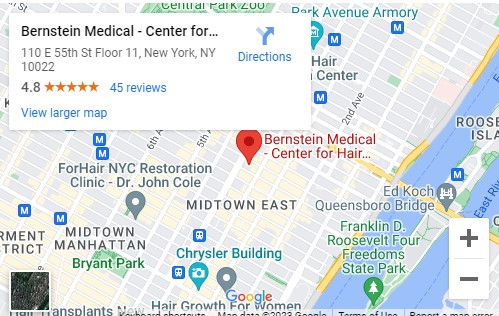Robert M. Bernstein, MD, New York, NY William R. Rassman, MD, Los Angeles, CA Dermatologic Surgery 1997; 23(9): 785-799. Background Follicular Transplantation is a method of hair restoration surgery which uses hair in its naturally occurring groups called follicular units. Using the follicular unit exclusively in the transplant, the surgeon can create hair patterns that […]
Synopsis: This article focuses on various aesthetic aspects of follicular unit hair transplants including hair distribution, density, hairline design, and temple and crown restoration. It also examines racial variations that can affect the hair restoration. Together with the 1995 paper, these paired articles laid the foundation for Follicular Unit Hair Transplantation.
Robert M. Bernstein, MD, New York, NY William R. Rassman, MD, Los Angeles, CA Dermatologic Surgery 1997; 23(9): 771-784. Background Follicular Transplantation is a method of hair restoration surgery which uses hair in its naturally occurring groups called follicular units. By using the follicular unit exclusively in the transplant, the surgeon can move extensive quantities […]
Synopsis: This landmark paper details how a patient should be evaluated for Follicular Unit Transplantation, stressing densitometry as a means of assessing both miniaturization and donor supply. It also provides guidelines for the planning of the first and subsequent hair transplant sessions and discusses the management of patients with diffuse androgenetic hair loss.
Synopsis: This short article describes the design for a wall-mounted placing stand that can store, chill and protect grafts while they are waiting to be placed into the scalp during the hair restoration procedure.
Synopsis: Hypothesizes the possible causes of delayed growth following a hair transplant procedure. It differentiates between physiologic factors that cause normal variations in the growth cycle and those due to graft injury that can possibly be prevented by meticulous surgical techniques.
Synopsis: A short paper that describes the cause and treatment of the occasional itching that follows a hair transplant procedure.
Synopsis: This writing explains the rationale for using large numbers of grafts in surgical hair restoration. It discusses the advantage of megasessions in conserving the donor supply, increasing patient satisfaction, and providing greater flexibility to the surgeon in sorting and distributing small grafts.
Synopsis: This was the first paper to challenge those promoting laser hair transplants and who claimed that lasers would be the future in surgical hair restoration. The publication stressed that lasers caused damage to the recipient area and could result in scarring and poor growth. It explained why lasers were, in fact, inferior to cold steel techniques in making recipient sites.
Synopsis: This publication, written when scalp reductions were at the height of their popularity, cautioned that scalp reductions caused unnecessary scarring, used up precious donor reserves and caused more cosmetic problems than they solved. It suggested that, with the advent of the more robust follicular unit hair transplantation, scalp reductions should not be used in the treatment of androgenetic hair loss. This publication, along with the 1993 paper of O’Tar Norwood, played a critical role causing the rapid decline in the use of scalp reductions in hair restoration surgery. Fortunately, this once common procedure for male pattern alopecia is now rarely used.





